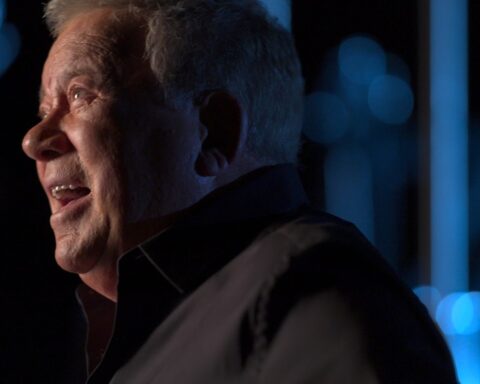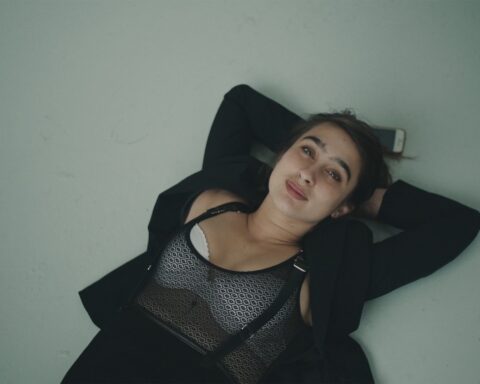Bright Lights: Starring Carrie Fisher and Debbie Reynolds
(USA, 96 min.)
Dir. Alexis Bloom, Fisher Stevens
“They love her and I’m her custodian,” explains late actress Carrie Fisher while signing photographs of Princess Leia for adoring fans in the documentary Bright Lights: Starring Carrie Fisher and Debbie Reynolds. “And I’m the closest they’re going to get.”
This scene, which comes at centre of Bright Lights, might be the highlight with which the doc shows the spirit and humour of the late actress. Fisher might best be known as the intergalactic princess with the funny hairdo in the Star Wars franchise, but there’s a lot more to her career and personality. The doc sees Fisher as a great sport in carrying this small cross to please fans whose lives she touched with her strong action star—and she makes a little money at it, too, collecting $70 a signature in a performance she dubs the “celebrity lap dance.” Her jolly sense of self-deprecating humour makes every minute of this doc a joy.
Bright Lights: Starring Carrie Fisher and Debbie Reynolds celebrates the lives of two Hollywood legends. This doc, which debuted at Cannes last year and gets an accelerated release following the unexpected deaths of Fisher and her mother Debbie Reynolds, offers an intimate glimpse into the lives of two women who shaped Hollywood. The doc profiles the mother-daughter duo as Fisher readies for the production of Star Wars: The Force Awakens and as Reynolds winds down her onstage performances. Bright Lights is an affectionate tribute to these two resilient women as it captures the warm relationship between Fisher and Reynolds and reflects upon their remarkable careers.
Bright Lights resembles a Tinseltown cousin of Grey Gardens, the Maysles documentary about mother-daughter duo of Edie Beales who thrive in a decrepit old mansion, as it takes audiences inside the homes of the two stars. Fisher and Reynolds don’t live together, nor are their homes gigantic caverns of squalor, but they live side by side in neighbourly mansions of Hollywood luxury. They’re also both fairly eccentric characters like the Beales and have wonderful onscreen rapport. Directors Alexis Bloom and Fisher Stevens capture numerous moments of Fisher and Reynolds bantering casually during takes, bickering sunnily and reminiscing about the good old days, and these candid glimpses display a strong loving relationship.
Especially significant are the Hollywood relics that exist in both houses, particularly that of Reynolds’, which reveal her efforts to preserve Hollywood history. Among the items of Hollywood memorabilia one sees in Reynolds’ home are a pair of ruby slippers and a Maltese Falcon—prized mantel items by any measure—and Bloom and Stevens devote a sizable portion of Bright Lights to recount her fight to save Hollywood memorabilia. This plight, which the recent Canadian doc The Slippers also recounts in its tale of the ruby slippers, might be Reynolds’ greatest legacy as she tried to open a Hollywood museum. Bright Lights explains how Reynolds’ plan never came to fruition despite talks with the Academy. The doc shows how the actress faced significant debt in order to honour Hollywood’s past and one hopes the film invites Hollywood to reconsider the mission.
Some notable elements of Fisher/Reynolds lore don’t make it into the documentary, though, as Bright Lights omits much discussion of Fisher’s success as a novelist. Unfortunately, the doc doesn’t acknowledge the memorable take on their relationship dramatized in the novel and film adaptation Postcards from the Edge, but some observational moments of Fisher performing a song for friends and of Reynolds belting out “I’m still here” echo the film.
Interviews with Fisher, Reynolds, and Todd Fisher (Reynold’s son/Carrie’s brother) chronicle the family’s history in showbiz and the making of a Hollywood dynasty. These accounts are essential tidbits of Hollywood history and the machinery of stardom as the two actresses recall their early days. The interviews with Fisher and Reynolds alike show two women who defy ageism and continue to thrive in Hollywood by taking on new roles and upping their star status with age. Scenes with Reynolds indicate her declining health, particularly in the film’s latter act as she readies to accept a lifetime achievement award from the Screen Actors Guild, but her ability to perform onstage past the age of eighty reminds one of Bette Davis’s wish to go out with her heels on and die acting.
Some scenes might be hard for viewers to watch given the proximity of the stars’ deaths, like one in which Reynolds drops the ruby slippers and asks to take a break, or when Fisher laughs off the regime of fitness training that George Lucas requires for Star Wars. She celebrates the end of a workout by lighting a smoke and cracking open a Coke. In every scene, though, Fisher’s lust for life is clear and as much as she acknowledges Princess Leia’s status as a sex icon, she shows no bones about accepting herself at her age. The same goes for Reynolds, whose love for performing slows only because her body can’t keep up with her spirit.
Bright Lights generally focuses on the positive, but Fisher is also very open about her experience with mental illness. She points out her manic states to the career and discusses how living with bipolar disorder affected her work and family life. Similarly, her openness about her addictions and willingness to laugh about them inject some spirit and candour into this warm look at a life well lived. Bright Lights is just the ticket for film buffs eager to focus on the positive and fondly remember two dearly departed icons.
Bright Lights: Starring Carrie Fisher and Debbie Reynolds screens in Toronto at TIFF Bell Lightbox on Saturday, January 7 at 7:45 PM and airs on HBO Canada that evening. The TIFF screening includes a discussion following the doc and encourages film buffs to share their favourite Fisher/Reynolds memories.










